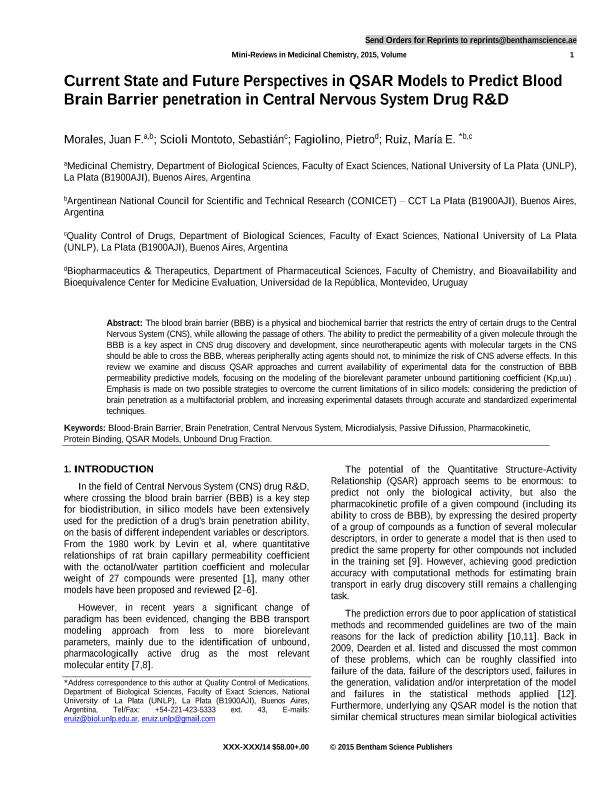Artículo
Current state and future perspectives in QSAR models to predict blood-brain barrier penetration in central nervous system drug R&D
Fecha de publicación:
02/2017
Editorial:
Bentham Science Publishers
Revista:
Mini-reviews In Medicinal Chemistry
ISSN:
1389-5575
Idioma:
Inglés
Tipo de recurso:
Artículo publicado
Clasificación temática:
Resumen
The Blood-Brain Barrier (BBB) is a physical and biochemical barrier that restricts the entry of certain drugs to the Central Nervous System (CNS), while allowing the passage of others. The ability to predict the permeability of a given molecule through the BBB is a key aspect in CNS drug discovery and development, since neurotherapeutic agents with molecular targets in the CNS should be able to cross the BBB, whereas peripherally acting agents should not, to minimize the risk of CNS adverse effects. In this review we examine and discuss QSAR approaches and current availability of experimental data for the construction of BBB permeability predictive models, focusing on the modeling of the biorelevant parameter unbound partitioning coefficient (Kp,uu). Emphasis is made on two possible strategies to overcome the current limitations of in silico models: considering the prediction of brain penetration as a multifactorial problem, and increasing experimental datasets through accurate and standardized experimental techniques.
Archivos asociados
Licencia
Identificadores
Colecciones
Articulos(CCT - LA PLATA)
Articulos de CTRO.CIENTIFICO TECNOL.CONICET - LA PLATA
Articulos de CTRO.CIENTIFICO TECNOL.CONICET - LA PLATA
Citación
Morales, Juan Francisco; Scioli Montoto, Sebastián; Fagiolino, Pietro; Ruiz, María Esperanza; Current state and future perspectives in QSAR models to predict blood-brain barrier penetration in central nervous system drug R&D; Bentham Science Publishers; Mini-reviews In Medicinal Chemistry; 17; 3; 2-2017; 247-257
Compartir
Altmétricas




